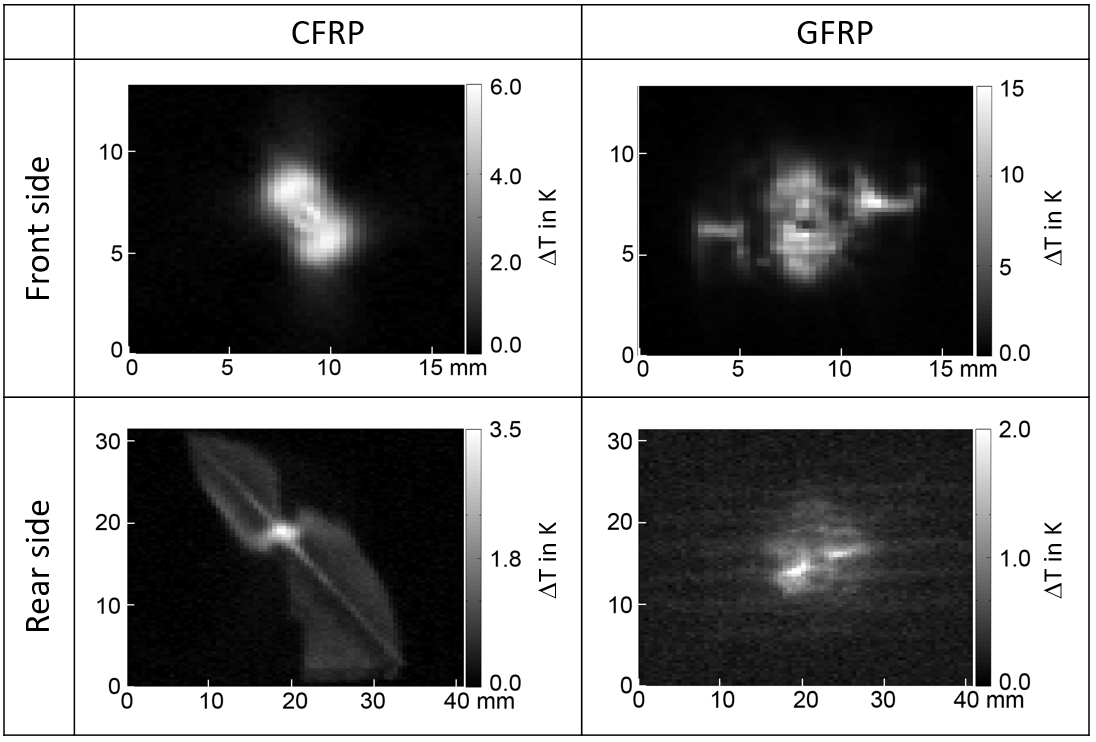
Thermograms of the front and rear side of 2.4 mm thick CFRP und 3.2 mm thick GFRP, recorded 68 ms after the impact. The impact energy was 8 J.
Source: BAM, Thermographic Methods division
Impact damages in fiber-reinforced polymer (FRP) composites are induced by particles and larger objects, which are unintentionally hitting the structure with different energies and momentums. Low-velocity impacts induce non-visible (NVID) or barely visible damages (BVID) at the surface, while the damage inside the structure can be much larger consisting of matrix cracks, debonding of fiber and matrix, delaminations and fiber cracking. The damage depends on the energy and velocity of the impact, the composition of the material, fiber orientation and structure of the FRP, and on the geometry of the affected component. For safety relevant components, impacts inducing NVID or BVID must therefore be inspected using non-destructive testing methods.
At BAM, we have monitored the surface temperature at the front and at the rear side of different CFRP and GFRP structures during and shortly after the impact by using an infrared camera with a high frame rate of 800 Hz. By measuring the spatial temperature increase during impact based on the dissipated energy for different impact energies, information is gained about the damage extents. From the thermograms, the different types of damages could be recognized very well, and significant different damage types were observed for CFRP and GFRP as well as at the front and rear sides of both types of materials, see figure 1. Whereas in CFRP at the rear side (opposite side to the impact) one to two longer matrix cracks and larger delaminations with a clear separation of the bottom layer occurred, the GFRP materials showed more but shorter matrix cracks and several small delaminations and cracks at various depths. The damage size was calculated from the thermal signature of the damages by counting the pixels having a temperature larger than a threshold value. We observed that the size of the heated area is increasing with increasing impact energy. If the plate thickness is increasing, similar impact energies led to smaller damages. In addition, we estimated the dissipated energy from the mean temperature of the heated area. For all materials, not only the absolute dissipated heat, but also the relative amount of dissipated heat in relation to the impact energy increased with impact energy (from 1% to about 30%). These investigations show that thermography is very well suited to monitor the damage processes in-situ and will help to develop new materials having higher impact damage tolerance.
Application of thermographic testing for the characterization of impact damage during and after impact load
Christiane Maierhofer, Rainer Krankenhagen, Mathias Röllig
published in Composites, Vol. 173, page 106899 et seq. 2019
BAM, Division Thermographic Methods


